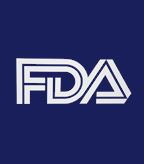FDA Panel Votes 'No' on Tivozanib for Renal Cancer
The FDA’s Oncologic Drugs Advisory Committee has voted 13 to 1 against AVEO's drug tivozanib for the treatment of patients with metastatic renal cell carcinoma.
The US Food and Drug Administration’s Oncologic Drugs Advisory Committee (ODAC) has voted 13 to 1 against tivozanib after reviewing AVEO's new drug application (NDA) for the treatment of metastatic renal cell carcinoma (RCC). The committee voted that the NDA for tivozanib did not demonstrate enough of a favorable benefit-to-risk ratio in treating metastatic RCC.

The committee reviewed 17 trials including a global phase III trial comparing tivozanib to sorafenib (Nexavar), a tyrosine kinase inhibitor approved for metastatic RCC patients.
Tivozanib is an oral, once-a-day, tyrosine kinase inhibitor in development for RCC. The drug is a second-generation vascular endothelial growth factor (VEGF)-receptor inhibitor that targets all three VEGF receptors and has a longer half-life which could increase its on-target inhibition function. Currently available oral VEGF-receptor inhibitors include pazopanib (Votrient), approved for metastatic RCC and soft-tissue sarcoma; and regorafenib (Stivarga), approved for metastatic colorectal cancer.
In a randomized, global phase III superiority trial in RCC, which is the basis of the NDA application, tivozanib was found to be better tolerated than a drug currently used to treat RCC, sorafenib. Sorafenib is a multi-tyrosine kinase inhibitor that targets the VEGF receptor, among other kinases. This trial, TIVO-1, compared the efficacy of the newer tivozanib to sorafenib in patients who have not been previously treated for their metastatic RCC.
The TIVO-1 results, announced in February of this year, were presented at the 2013 American Society of Clinical Oncology Genitourinary Symposium (ASCO GU). Patients in the tivozanib arm had a statistically significant improvement in progression-free survival (PFS) compared to the sorafenib arm (P = .042; 11.9 months median PFS vs 9.1 months, respectively). PFS was the primary endpoint in the trial.
The objective response rate was 33% in the tivozanib arm (32 partial responses and 1 complete response) and 23% in the sorafenib arm (23 partial responses and 1 complete response; P = .014). Patients in the tivozanib arm had fewer treatment-related side effects and fewer dose adjustments compared to patients in the sorafenib arm.
However, overall survival, a secondary endpoint, was not statistically different between the two treatment arms. The reason for this is not yet clear. Patients in the tivozanib arm had a median overall survival of 28.8 months compared to 29.3 months in the sorafenib arm (P = .105). The overall survival result is confounded by the design of the trial which allowed crossover of patients who progressed on sorafenib to the tivozanib arm.
The TIVO-1 trial randomized 517 patients one-to-one to either 1.5 mg per day of tivozanib on a 3 weeks on, 1 week off schedule, or 400 mg twice-daily sorafenib on a continuous basis.
ODAC serves to provide independent advice and recommendations to facilitate the FDA’s approval decisions. While the FDA considers the advice of ODAC, the FDA will decide independently whether to approve tivozanib. The announcement is expected by the end of July.